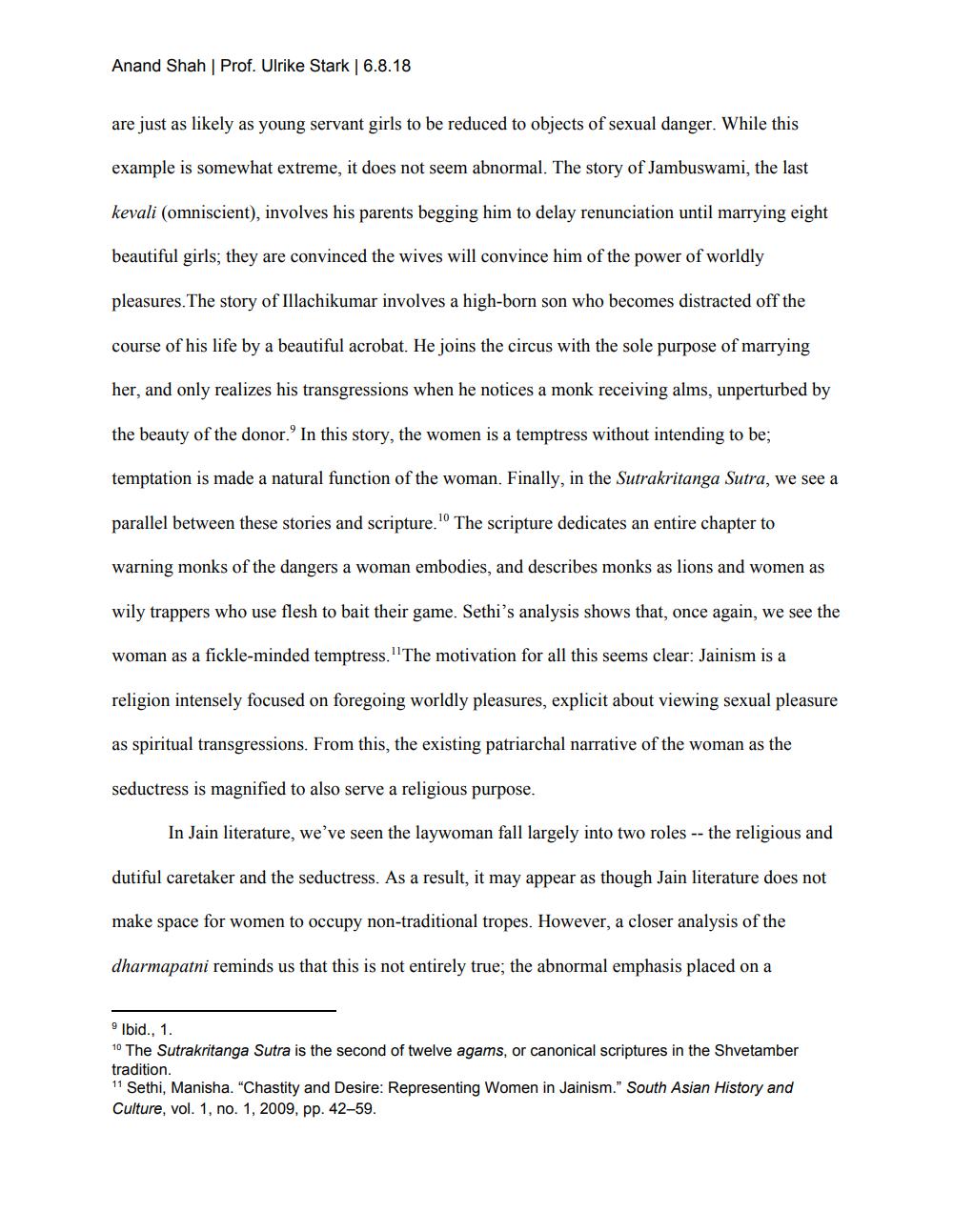Book Title: Jainism Parity And Patriarchy Author(s): Anand Shah Publisher: Anand Shah View full book textPage 7
________________ Anand Shah | Prof. Ulrike Stark 6.8.18 are just as likely as young servant girls to be reduced to objects of sexual danger. While this example is somewhat extreme, it does not seem abnormal. The story of Jambuswami, the last kevali (omniscient), involves his parents begging him to delay renunciation until marrying eight beautiful girls, they are convinced the wives will convince him of the power of worldly pleasures. The story of Illachikumar involves a high-born son who becomes distracted off the course of his life by a beautiful acrobat. He joins the circus with the sole purpose of marrying her, and only realizes his transgressions when he notices a monk receiving alms, unperturbed by the beauty of the donor.' In this story, the women is a temptress without intending to be; temptation is made a natural function of the woman. Finally, in the Sutrakritanga Sutra, we see a parallel between these stories and scripture. The scripture dedicates an entire chapter to warning monks of the dangers a woman embodies, and describes monks as lions and women as wily trappers who use flesh to bait their game. Sethi's analysis shows that, once again, we see the woman as a fickle-minded temptress. The motivation for all this seems clear: Jainism is a religion intensely focused on foregoing worldly pleasures, explicit about viewing sexual pleasure as spiritual transgressions. From this, the existing patriarchal narrative of the woman as the seductress is magnified to also serve a religious purpose. In Jain literature, we've seen the laywoman fall largely into two roles -- the religious and dutiful caretaker and the seductress. As a result, it may appear as though Jain literature does not make space for women to occupy non-traditional tropes. However, a closer analysis of the dharmapatni reminds us that this is not entirely true; the abnormal emphasis placed on a 9 Ibid., 1. 10 The Sutrakritanga Sutra is the second of twelve agams, or canonical scriptures in the Shvetamber tradition. 11 Sethi, Manisha. "Chastity and Desire: Representing Women in Jainism." South Asian History and Culture, vol. 1, no. 1, 2009, pp. 42-59.Page Navigation
1 ... 5 6 7 8 9 10 11 12 13 14 15 16 17 18
